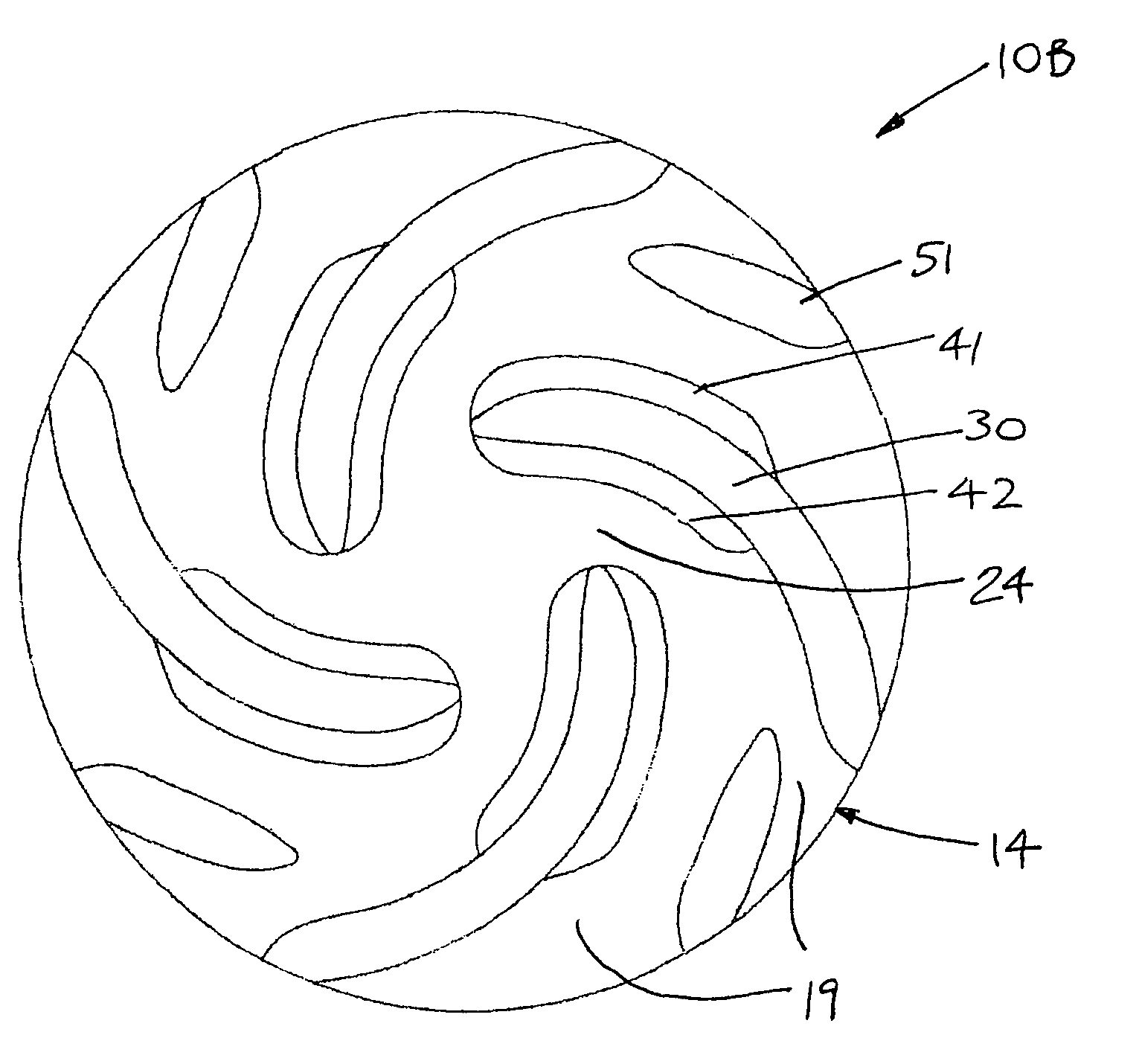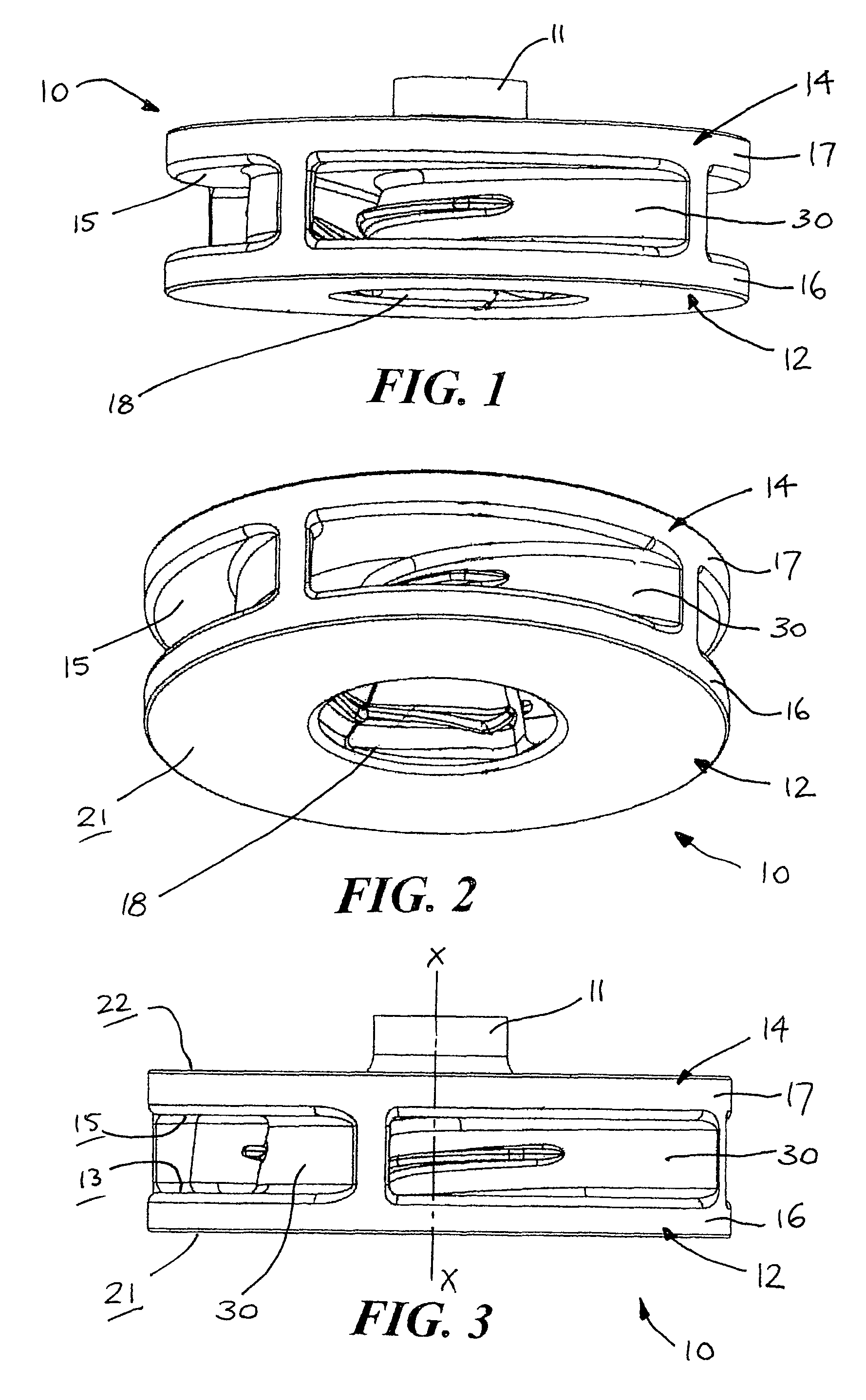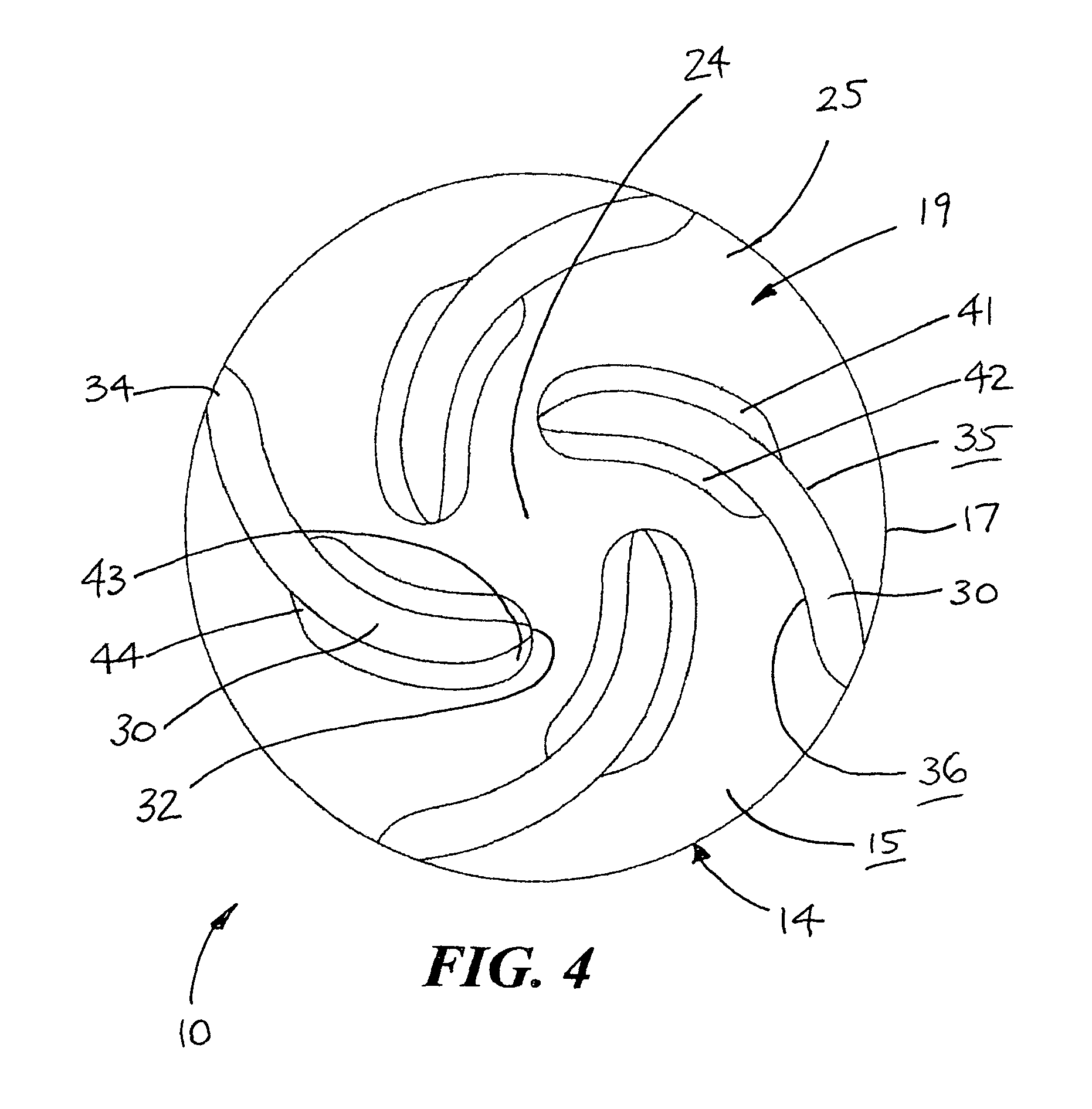Slurry pump impeller
a technology of impeller and slurry pump, which is applied in the field of impellers, can solve the problems of increased energy loss, decreased intensity (or strength) of vortices, and increased wear of impellers, and achieves the effect of facilitating the removal of impellers and facilitating smooth exit flow
- Summary
- Abstract
- Description
- Claims
- Application Information
AI Technical Summary
Benefits of technology
Problems solved by technology
Method used
Image
Examples
experiment 1
[0119]As shown in FIGS. 19(a) and 19(b) a standard (“baseline”) impeller is shown which has a front shroud and a back shroud and four impeller pumping vanes extending between the inner main faces of the shrouds. This impeller does not have any discharge guide vane disposed within a respective passageway, or projecting from the main face of one of the shrouds.
[0120]The side view of the impeller shown in FIGS. 19(a) and 19(b) shows the position of the four planes A, B, C and D which cut the relevant impeller design perpendicular to its rotational axis.
[0121]Plane A is positioned at a height above the back shroud which is less than about 35% of the pumping vane width (where the width of the pumping vane is defined as the distance between the front and back shrouds of the impeller).
[0122]Plane B is positioned at a height above the back shroud which is less than about 50% of the pumping vane width.
[0123]Plane C is positioned at a height above the back shroud which is located at more than...
experiment 2
[0127]As shown in FIGS. 20(a) and 20(b) an impeller is shown which has a front shroud and a back shroud and four impeller pumping vanes extending between the inner main faces of the shrouds. The main pumping vanes in Experiments 2 to 5 are all identical to those shown in Experiment 1. This impeller has discharge guide vanes disposed within each respective passageway, projecting from the inner main face of both the front shroud and the back shroud and positioned about midway across the width of the passageway between two pumping vanes. In this instance the impeller vanes extend to a height of about 33% of the impeller pumping vane width. This impeller corresponds with the embodiment shown in FIGS. 5, 6 and 7 of this specification.
[0128]The side view of the impeller shown in FIGS. 20(a) and 20(b) shows the position of the four planes A, B, C and D which cut the relevant impeller design perpendicular to its rotational axis in the same positions as shown in Experiment 1.
[0129]The result...
experiment 3
[0131]As shown in FIGS. 21 (a) and 21(b) an impeller is shown which has a front shroud and a back shroud and four impeller pumping vanes extending between the inner main faces of the shrouds. This impeller has discharge guide vanes disposed within each respective passageway, projecting from the inner main face of both the front shroud and the back shroud and spaced from a respective pumping vane to which it is closest by about one discharge guide vane thickness into the passageway. In this instance the impeller vanes extend to a height of about 33% of the impeller pumping vane width.
[0132]The side view of the impeller shown in FIGS. 21 (a) and 21(b) shows the position of the four planes A, B, C and D which cut the relevant impeller design perpendicular to its rotational axis in the same positions as shown in Experiment 1.
[0133]The results of Experiment 3 can be seen by reference to the plotted velocity vectors in FIGS. 21 (a) and 21(b), which are labelled Plane A, Plane B, Plane C a...
PUM
| Property | Measurement | Unit |
|---|---|---|
| pressure | aaaaa | aaaaa |
| length | aaaaa | aaaaa |
| height | aaaaa | aaaaa |
Abstract
Description
Claims
Application Information
 Login to View More
Login to View More - R&D
- Intellectual Property
- Life Sciences
- Materials
- Tech Scout
- Unparalleled Data Quality
- Higher Quality Content
- 60% Fewer Hallucinations
Browse by: Latest US Patents, China's latest patents, Technical Efficacy Thesaurus, Application Domain, Technology Topic, Popular Technical Reports.
© 2025 PatSnap. All rights reserved.Legal|Privacy policy|Modern Slavery Act Transparency Statement|Sitemap|About US| Contact US: help@patsnap.com



